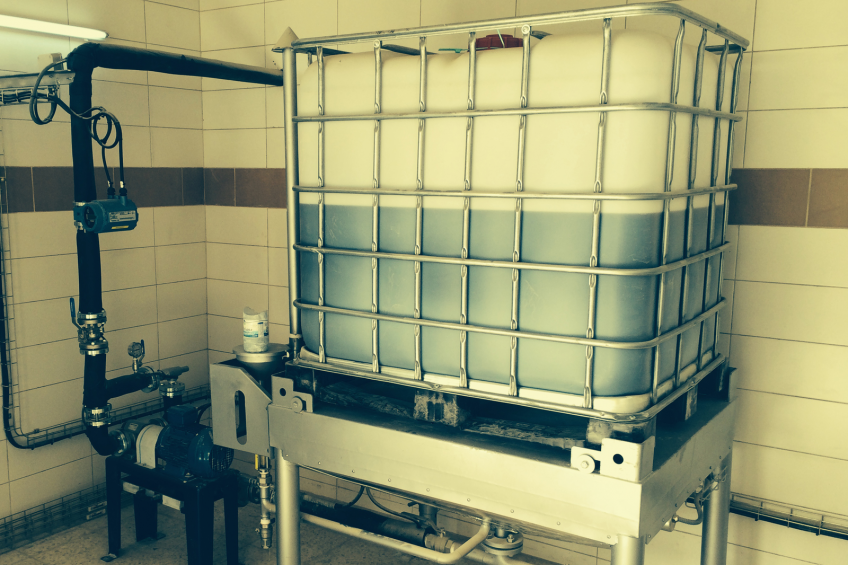Key factors for liquid additives

In the feed industry, the usage of liquid additives is as frequent as powders. Sometimes, the same precautions apply. In some others cases, specific aspects need to be addressed.
Dosing of liquids can be done by manual or automatic systems using a weighing scale. For both situations, the same respective precautions as for powders must be taken to ensure the best accuracy possible. The liquid nature of the additive makes it possible to use metering as an alternative technology for dosing.
For this, a flowmeter is employed which can be mechanical (measures a volume flow with a gear actioned by the fluid force), electromagnetic (measures a volume flow related the voltage generated when the fluid cuts through an electromagnetic field) or mass (evaluates a mass flow by measuring the deflection caused by the fluid on the sensor tube). While mechanical flowmeters are economical, electromagnetic have the advantage of working without pressure drop. In contrast, mass flowmeters are comfortable as they don’t need to be calibrated for the fluids density. All types being sufficiently accurate and requiring very little maintenance.
A liquid dosing system using metering is an automated installation. Its overall precision comes from the flowmeter and the chain of measurements from data acquirement capabilities of the PLC (working frequency) to valve closing speed. Besides, as for powders, the link to the PLC must be of quality and the value stored by the production software must be correctly entered.
Regardless the dosing technology chosen, a set of pumps and valves adapted to the fluid characteristics must be installed in order to transport the additive. Moreover, maintenance and calibration of the whole system (from the flowmeters’ measure to the computer display value) has to be done in a yearly basis.
Good spraying equipment for mixability
When spraying a liquid additive, the installation must be designed to maximise its mixability which is mainly dependent on the droplet number and size. The first element to consider is the nozzle that must ensure a spraying pattern as wide as possible without mist emission (a flatbed spray nozzle is recommended). Then, the applied pressure must be adequate for a correct droplet formation and dispersion. No air must penetrate the pipes with the risk of flow inconsistencies.
When mixing, the position of the nozzles is fundamental. The spray must be directed to the area where the mixing is most vigorous. The spray from different nozzles must not touch and the droplet trajectory must be obstacle free with the risk of spray disturbances. For some liquid ingredients, the temperature is major parameter affecting the droplets development because it can alter the viscosity. Hence, controlled temperature must be applied to the system in order to obtain a constant viscosity adapted to the desired droplet characteristics. As an example for D, L-methionine hydroxy (D,L-HMTBA), the working temperature giving the adequate viscosity is 15-20°C.
Proper mixing conditions
Similar precautions as for powders must be taken. The transfer from the weighing must be ensured without any loses, thus, special attention to leaks must be paid. When possible, short distances between the flowmeter and the mixer should be implemented. The spray must avoid quasi-motionless dead spaces and respect the time sequence.
Moreover, experience (from Adisseo) has showed that liquid additives must be incorporated before the main liquids (such as oil) in a short spraying time without increasing the overall mixing procedure. Unlike powders, liquid additives present less risk of segregation after mixing, as they are sprayed on all particles.
Feed quality proven in the field: focus on methionine
Adisseo has taken advantage of its international presence to perform homogeneity and recovery trials for methionine during the last three years in 44 feed mills in Europe, Middle East and Africa. The collected data demonstrates that the homogeneity is equivalent regardless of the nature of the additive. Whenever a consistent result is obtained for powder (D,L Methionine), the same occurs for liquid (D,L-HMTBA) with highly similar results.
These trials have also come to the conclusion that every type of mixer can give homogeneous results. Moreover, regardless the incorporation rate, this trials have also shown that the targeted homogeneity can be attained. Nevertheless, the quality of the mixture depends on all previous described criteria.
Adisseo proves its experience
In order to achieve feed quality standards, Adisseo proposes its “Mixer Profile”, a service designed to assess recovery and homogeneity, so as to detect deviations if any. The compiled data from this test show that 76% of the installations supported by Adisseo perform according to the expected and almost 90% give homogeneous results (Figures 3a and 3b). By contrast, the equipment without this support lead to strongly dispersed results in which only 38% comply with the quality standards. This confirms that the respect and control of several key factors lead to high performance of additive application, either under powder or liquid form.
Through the programme DIM (Design, Implement and Monitoring), Adisseo guides its customers to properly design their installations to be cost effective and quality efficient. The experts help to install, calibrate and validate the equipment and provide training for its operation. Moreover, with the Mixer Profile, Adisseo assist on the monitoring of feed quality and arrange corrective or preventive actions when needed.












